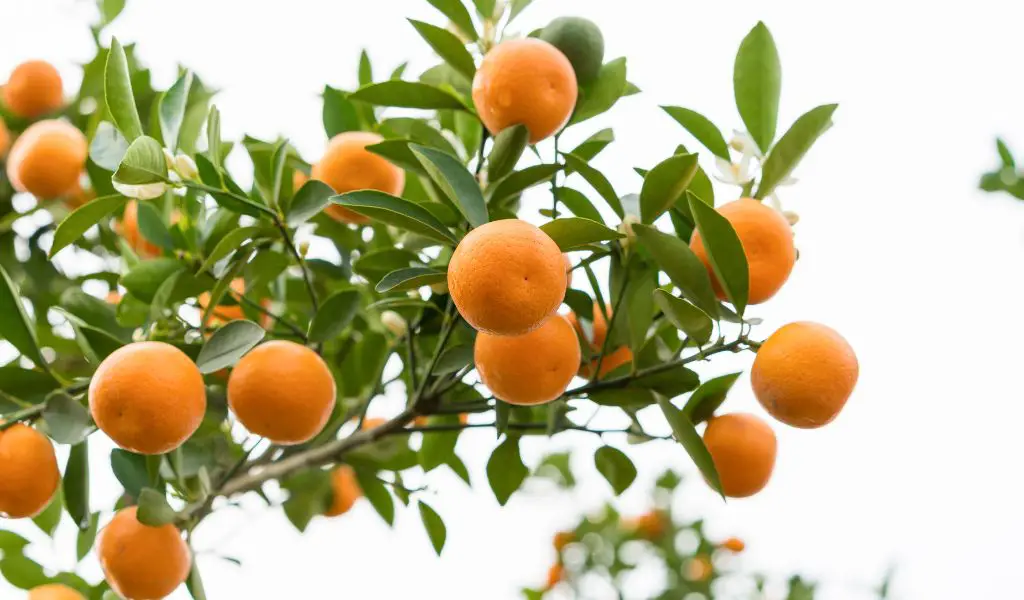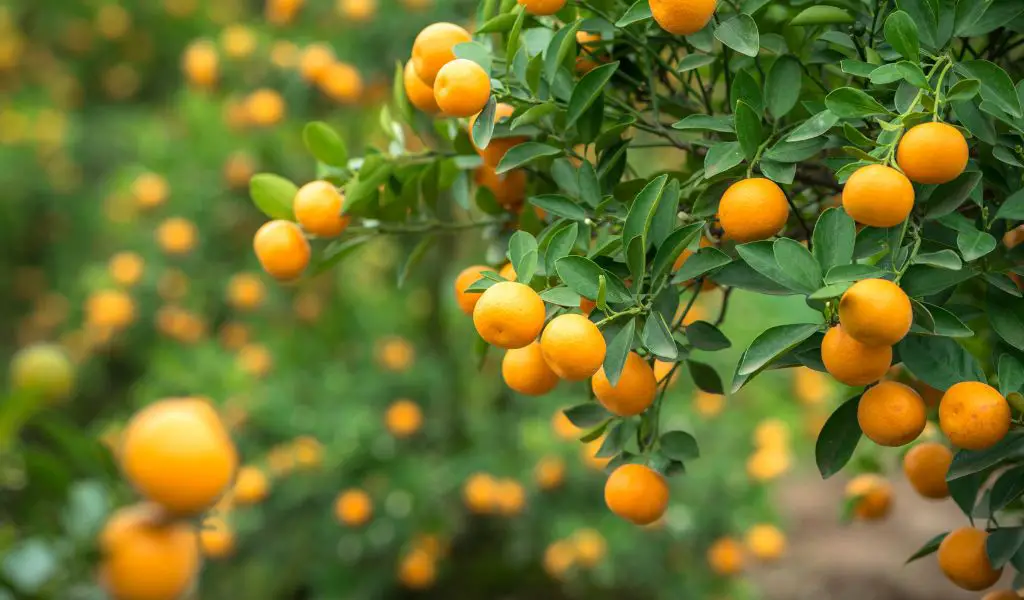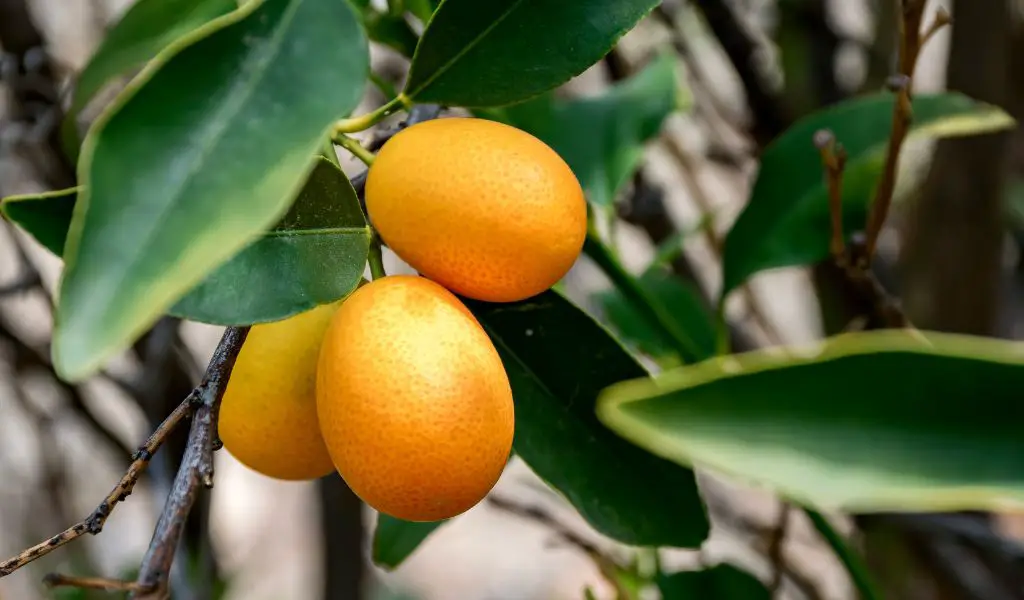Introduction
What are kumquats?
Kumquats are small, oval-shaped citrus fruits that resemble miniature oranges.
They are native to Asia and are known for their unique sweet-tart flavor.
Unlike other citrus fruits, you can eat the entire kumquat, including the thin, sweet peel.
Why grow kumquats?
Growing kumquats is an excellent choice for gardeners who want to enjoy a delicious, unique fruit that’s relatively low-maintenance and easy to grow.
Plus, kumquat trees add an exotic touch to any garden, with their glossy green leaves and fragrant blossoms.
Choosing the right variety
Before you start growing kumquats, it’s essential to choose the right variety.
Kumquats come in both sweet and tart varieties, each with its unique flavor profile.
Sweet varieties
Sweet kumquat varieties include the ‘Nagami’ and ‘Meiwa.’ The ‘Nagami’ kumquat is the most common type found in gardens and has a slightly tart flavor.
The ‘Meiwa’ kumquat, on the other hand, has a sweeter taste and is often preferred for fresh eating.
Tart varieties
If you prefer a more tart flavor, you might want to consider growing the ‘Calamondin’ or ‘Marumi’ kumquat.
Both varieties have a more pronounced tartness and are ideal for use in marmalades, preserves, and other recipes.








Planting kumquats
Location
Kumquat trees thrive in full sun and need at least six hours of sunlight daily.
Choose a well-draining location in your garden, as kumquats don’t like standing water.
If you live in a colder climate, consider planting your kumquat tree in a container so you can bring it indoors during the winter months.
Soil
Kumquats prefer slightly acidic to neutral soil with a pH between 5.5 and 6.5.
They can tolerate various soil types, but well-draining soil is crucial to prevent root rot.
Planting process
Dig a hole twice as wide and deep as the root ball of your kumquat tree.
Gently loosen the roots before placing the tree in the hole, ensuring the top of the root ball is level with the surrounding soil.
Fill the hole with soil, firmly pressing down to eliminate air pockets. Water thoroughly after planting.

Caring for your kumquat tree
Watering
Kumquat trees need regular watering, especially during the first few years.
Keep the soil evenly moist but not waterlogged. In hot, dry weather, you may need to water more frequently.
As a rule of thumb, water your kumquat tree once or twice a week.
Fertilizing
Fertilize your kumquat tree with a balanced, slow-release citrus fertilizer in the spring and again in the fall.
Follow the manufacturer’s recommendations for application rates. Be sure not to over-fertilize, as this can lead to excessive growth and reduced fruit production.
Pruning
Pruning is not essential for kumquat trees, but it can help maintain their shape and size.
Prune your kumquat tree in late winter or early spring before new growth begins.
Remove dead, diseased, or crossing branches, and trim back any overly long shoots.
Pests and diseases
Kumquat trees are relatively resistant to pests and diseases.
However, you may occasionally encounter aphids, scale insects, or citrus leaf miners. Treat these pests with insecticidal soap or horticultural oil as needed.
Keep an eye out for diseases such as citrus canker or root rot, and address any issues promptly to ensure your tree remains healthy.
Harvesting and using kumquats
When to harvest
Kumquat trees typically begin bearing fruit within two to three years after planting.
Harvest kumquats when they’re fully ripe, usually between late fall and early winter. The fruit should be a deep orange color and slightly soft to the touch.

How to harvest
To harvest kumquats, gently twist the fruit off the tree, taking care not to damage the peel.
Use scissors or pruning shears to cut the fruit from the tree if necessary.
Culinary uses
Kumquats can be enjoyed fresh, straight from the tree, or used in various recipes.
They make delicious marmalades, preserves, and chutneys. You can also add them to salads, desserts, or cocktails for a burst of sweet-tart flavor.
FAQs
Q: Can kumquat trees be grown in containers?
A: Yes, kumquat trees are well-suited for container growing. Choose a large, well-draining container, and be sure to bring the tree indoors during colder months if you live in a region with freezing temperatures.
Q: How tall do kumquat trees grow?
A: Kumquat trees typically grow to be 8-15 feet tall, depending on the variety and growing conditions.
Q: Are kumquat trees self-pollinating?
A: Yes, kumquat trees are self-pollinating, which means you don’t need more than one tree for fruit production.
Q: How long does it take for a kumquat tree to bear fruit?
A: Kumquat trees usually start producing fruit within two to three years after planting.
Q: Can I grow kumquats from seeds?
A: Yes, you can grow kumquats from seeds, but be aware that it may take several years before the seed-grown tree begins to bear fruit.
Additionally, seed-grown trees may not produce fruit with the same characteristics as the parent tree.
For faster results and consistent fruit quality, consider purchasing a grafted kumquat tree from a reputable nursery.
Final thoughts 💭
Growing kumquats is a rewarding endeavor for any gardener, providing a unique and tasty fruit that’s easy to care for.
With the right variety, location, and care, you’ll enjoy bountiful harvests of these delightful citrus fruits for years to come.




